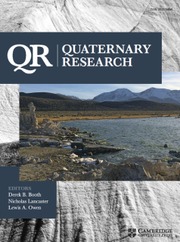No CrossRef data available.
Article contents
Landscape evolution and ancient settlement patterns in a small river basin of the Huangshui River and the prehistoric Wangjinglou City, Central China
Published online by Cambridge University Press: 20 January 2025
Abstract
Prehistoric humans seem to have preferred inhabiting small river basins, which were closer in distance to most settlements compared to larger rivers. The Holocene landscape evolution is considered to have played a pivotal role in shaping the spatiotemporal patterns of these settlements. In this study, we conducted comprehensive research on the relationship between landscape evolution and settlement distribution within the Huangshui River basin, which is a representative small river in Central China with numerous early settlements, including a prehistoric city known as the Wangjinglou site (WJL). Using geoarchaeological investigations, optically stimulated luminescence dating, pollen analysis, and grain-size analysis, we analyzed the characteristics of the Holocene environment. The results indicate the presence of two distinct geomorphic systems, namely the red clay hills and the river valley. The red clay hills, formed in the Neogene, represent remnants of the Songshan piedmont alluvial fan that was eroded by rivers. There are three grades of terraces within the river valley. T3 is a strath terrace and formed around 8.0 ka. Both T2 and T1 are fill terraces, which were developed around 4.0 ka and during the historical period, respectively. The sedimentary features and pollen analysis indicate the existence of an ancient lake-swamp on the platform during 11.0–9.0 ka. This waterbody gradually shrank during 9.0–8.0 ka, and ultimately disappeared after 8.0 ka. Since then, the development of large-scale areas of water ceased on the higher geomorphic units. River floods also cannot reach the top of these high geomorphic units, where numerous prehistoric settlements are located, including the Xia–Shang cities of the WJL site. Our research demonstrates that landscape stability supported the long-term and sustainable development of ancient cultures and facilitated the establishment of the WJL ancient cities in the region.
Keywords
Information
- Type
- Research Article
- Information
- Copyright
- © Institute of Archaeology Chinese Academy of Social Sciences, 2025. Published by Cambridge University Press on behalf of Quaternary Research Center.


